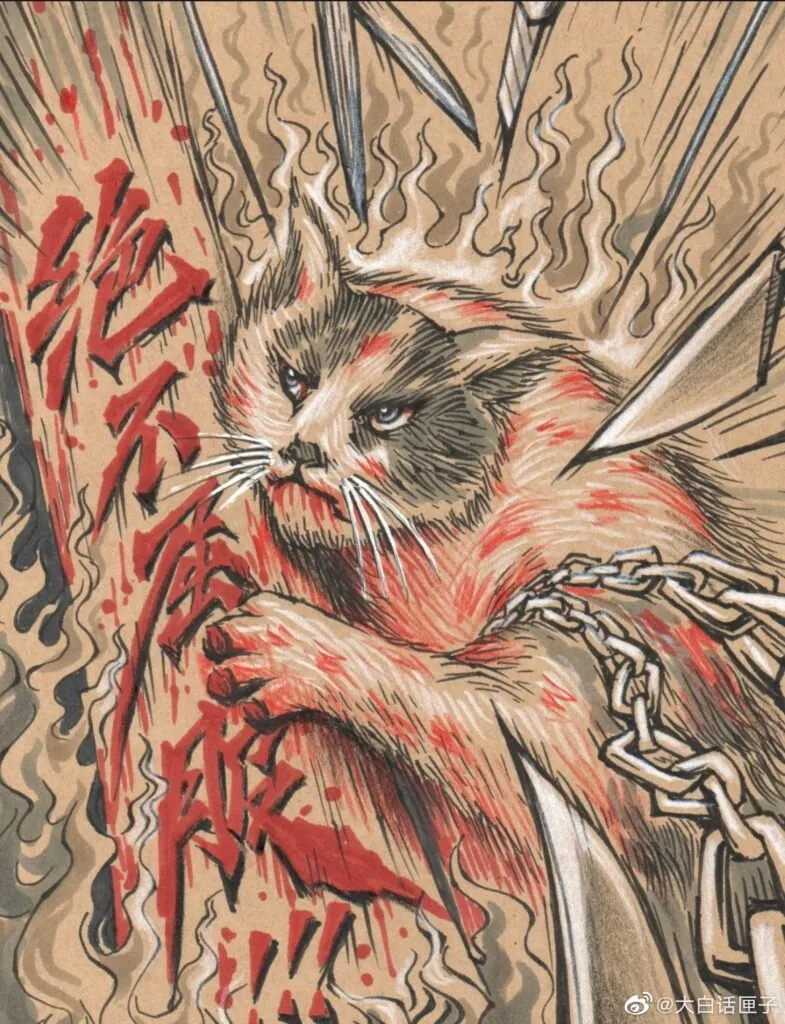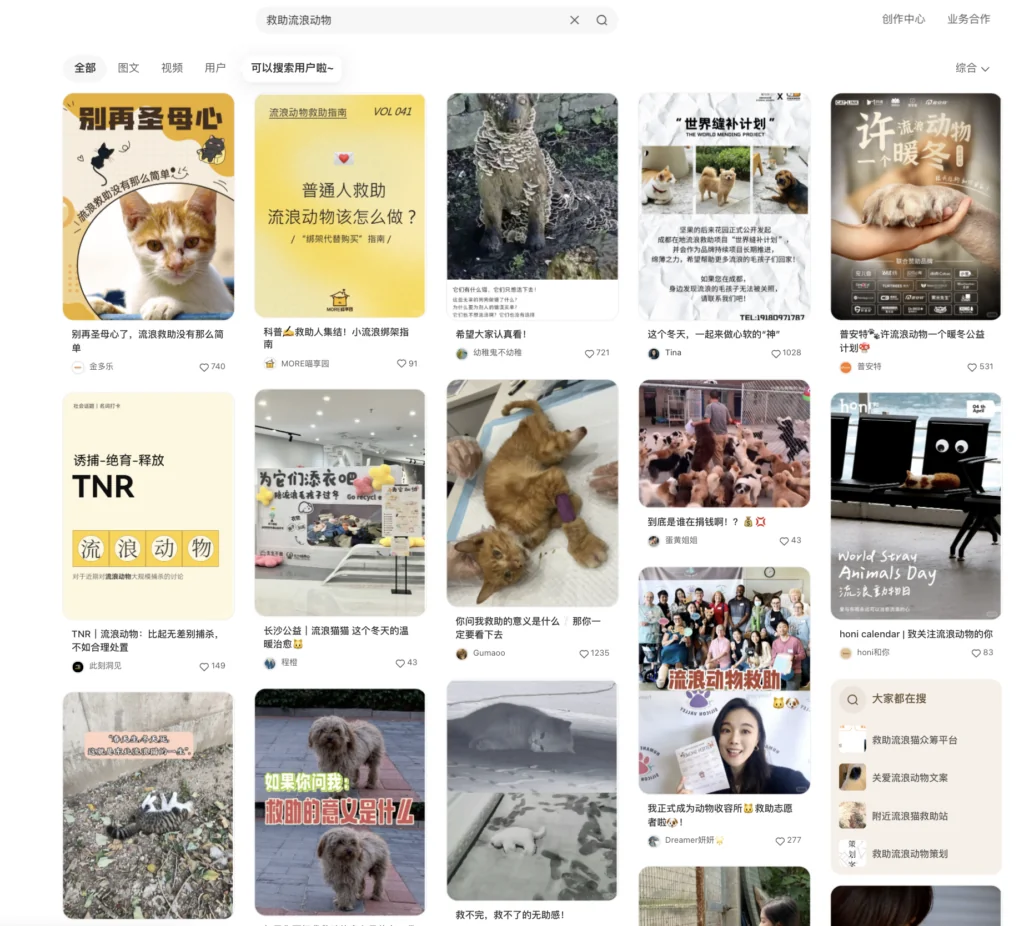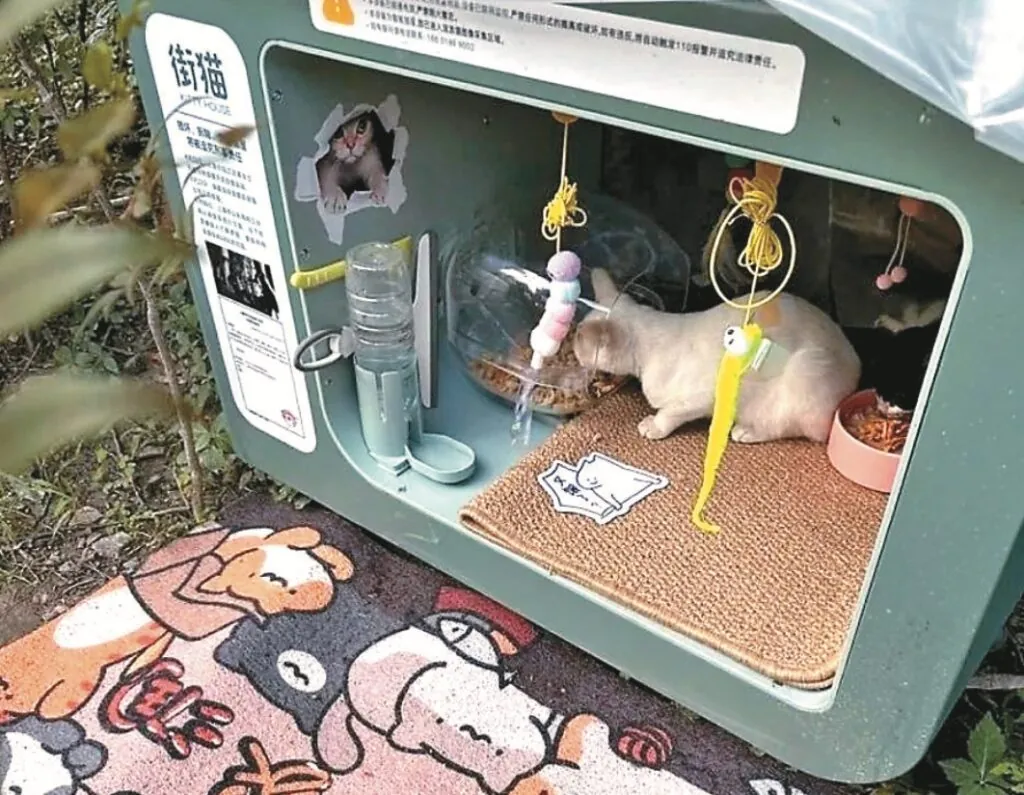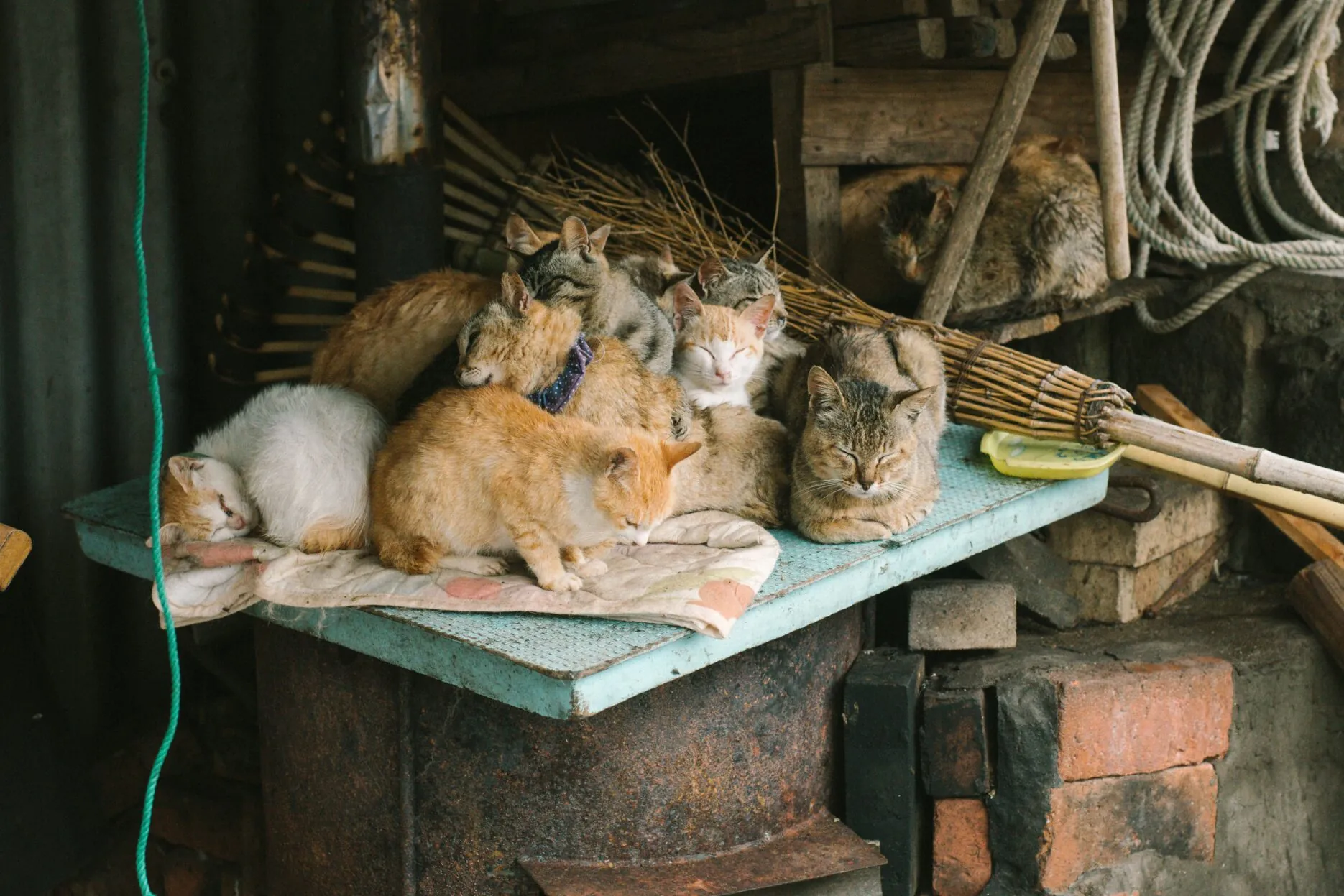Millions of furry souls weave through China’s vibrant cities, sharing the landscape with bustling human life. Yet, these stray animals often face a starkly different reality, battling hunger, exposure, and constant danger.
A spark of outrage, a call for action
Last year, a food blogger’s horrific abuse of a defenceless cow cat for three days including starvation, knife cuts, and being burned alive sparked outrage and ignited a firestorm across the web. This incident, while abhorrent, shone a light on the need for stronger animal cruelty laws and amplified the voices of countless individuals dedicated to improving the lives of strays.


However, the issue extends beyond individual acts. A two-year-old girl’s mauling by an off-leash Rottweiler in Chengdu, Sichuan further highlighted the risks posed by uncontrolled animals. In response, local authorities in several provinces implemented crackdowns on both strays and undocumented pets. While aiming to address public safety concerns, these measures raise questions about the effectiveness of such broad actions and the potential impact on responsible pet ownership.
Thankfully, the narrative indeed has started shifting. Growing awareness, coupled with dedicated efforts from brands and technology companies, is paving the way for a brighter future for these forgotten creatures. However, there continues to be various challenges faced by these lives, and there is still a long way to go.
Growing awareness, coupled with dedicated efforts from brands and technology companies, is paving the way for a brighter future for these forgotten creatures
The current status: alarming numbers and limited protection
So, what is the current status of stray animals and protection laws in China?
With over 40 million stray dogs and 53 million stray cats, as reported in the 2021 China Pet Industry White Paper, this staggering number is compounded by China’s 2019 ranking as the fifth country with the highest number of rabies deaths, according to the International Journal of Infectious Diseases.
The living conditions of stray animals in most cities are still deeply concerning. They endure the agony of extreme cold and hunger, the torment of disease, the risks of reproduction due to not being neutered, and the constant struggle to find shelter. Beyond mere abandonment, the lack of legal constraints against pet cruelty, animal abuse, and poisoning, also exacerbates a critical situation for stray animals.
Burden of kindness: Ye Chunhua’s struggle for 700 abandoned souls
While many rescue organisations have emerged, they too face significant challenges. Without government support and substantial financial backing, they rely solely on donations from kind-hearted individuals and the tireless efforts of volunteers to sustain their operations.
58-year-old Ye Chunhua from Chengdu embodies selflessness, rescuing over 700 stray animals in 30 years. Her self-built shelter offers sanctuary, but the reality bites: feeding, housing, and caring for 700 mouths costs nearly 100,000 Yuan monthly.
The weight of responsibility is immense. Nearing 60, Ye sometimes resorts to begging to supplement dwindling resources. Each rescued animal represents a life saved, but the financial strain threatens to break her unwavering spirit.
Ye’s story paints a stark picture – one of boundless compassion battling overwhelming odds. While her dedication is admirable, it highlights the harsh realities faced by animal rescuers, often working tirelessly with limited means.
Similarly, in 2022, the “Cat Virtues Academy” (猫德学院) in Shandong, a capture, training and adoption volunteer group was so overwhelmed by abandoned cats on their doorsteps, that they had to stop taking in new cats.
But hope flickers amidst the darkness. The more voices raised for homeless animals, the more actions and processes are being initiated by society, both from individuals and corporate entities.
The more voices raised for homeless animals, the more actions and processes are being initiated by society, both from individuals and corporate entities
The hashtag #rescuingstrayanimals has sparked significant engagement, with 1.3 billion views and 290k participants on Xiaohongshu (RED), and over 8.6 billion views on Douyin, showcasing the heightened attention to this matter.

Brands championing the cause: tech and corporate social responsibility (CSR) initiatives
The advancement in technology, such as introducing applications for virtual feeding of stray cats, and cause-related marketing campaigns have been widely implemented over the past year.
“Hello Street Cats” – using tech to create a better world
This groundbreaking app leverages the power of technology to improve the lives of stray cats. Developed by Hello , a leading technology company in China, the app offers a comprehensive and gamified solution to stray cat management, including:
- Virtual Feeding: Users can remotely feed stray cats in real time, ensuring they have access to fresh and nutritious food.
- Virtual Cat Care: Users can interact with and observe stray cats through three strategically placed cameras, fostering a sense of connection and compassion.
- Share the Moment: When feeding and leaving messages, the Hello Street Cat app automatically generates a video of the kitten eating, ready for the feeder to share as a social feature.
- Community Building: The app creates a platform for cat lovers to connect, share information, and collaborate on initiatives to help strays.

Hello Street Cat’s app interface


A humane approach to stray cat management
Hello Street Cat’s innovative approach to stray cat care is based on the TNR method (Trap-Neuter-Return). This humane and effective method involves trapping stray cats, neutering or spaying them, and then returning them to their original location. By preventing unwanted litters, TNR helps to reduce the number of stray cats over time, especially in China.
The launch of Hello Street Cat marks a significant step forward in the fight against stray cat overpopulation in China. By combining innovative technology with a humane approach, the app has the potential to make a real difference in the lives of millions of unhoused cats.
Rise of stray animal CSR campaigns
Riding the wave of China’s booming pet economy, brands across industries are jumping on the stray animal cause for their CSR campaigns. Whether it’s food giants like Meituan partnering with rescue shelters or sportswear brands launching dog-walking trainers with charity donations, the message is clear: brands are recognising consumers’ concerns. From interactive installations to cat cafes raising awareness, these campaigns offer brands a chance to connect with a passionate audience, build positive perception, and make a real difference for strays.
A brighter ruture on the horizon
these positive developments signal a potential turning point for China’s stray animals, offering a brighter future on the horizon
China’s millions of stray animals face a bleak reality – harsh conditions, limited legal protection, and public health concerns. However, hope glimmers as public awareness surges through social media campaigns, tech-driven solutions like virtual feeding apps emerge, and brands champion rescue efforts. While stronger animal cruelty laws, support for rescue organisations, and responsible pet ownership remain crucial, these positive developments signal a potential turning point for China’s stray animals, offering a brighter future on the horizon.









